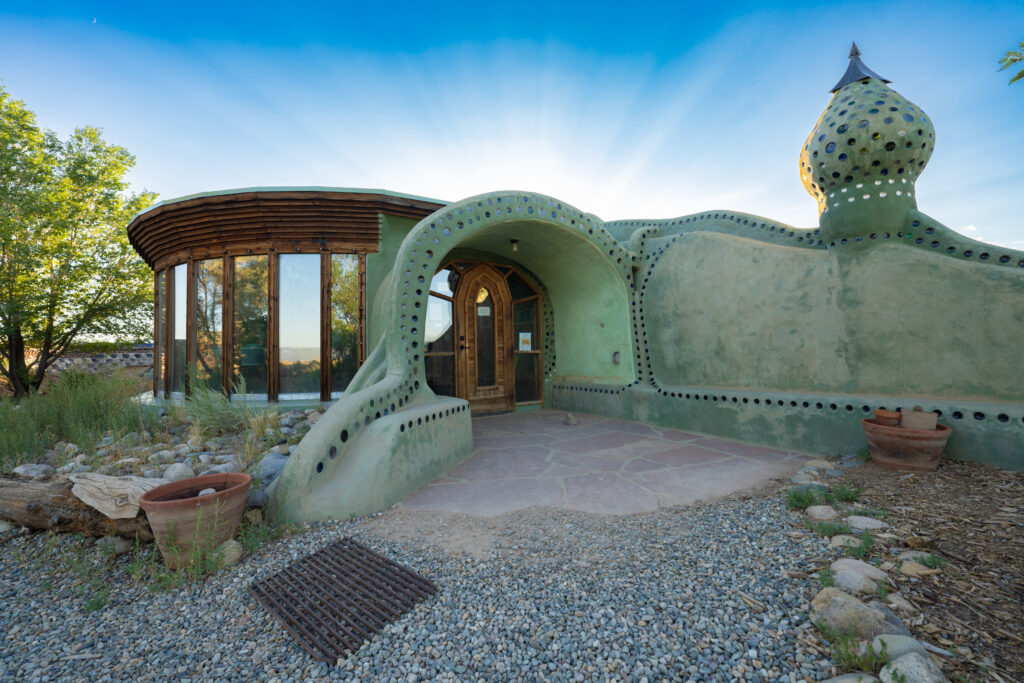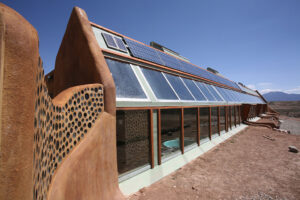We all claim to love the planet, but do we really? It’s easy to love something when it’s lavishing you with refreshing hikes, clear lakes, and gorgeously glowing sunsets. It’s much harder when the object of your affections asks for something in return — such as your toilet paper.
It isn’t news that pollution and climate change are threatening our planet. Scientists have been screaming that our lifestyles are unsustainable for decades, begging people to be more mindful in their consumption. Yet habit and convenience has caused us to largely ignore these dire warnings, continuing to use paper coffee cups and burn fossil fuels like there’s no tomorrow. At this rate, there might not be.
There are of course limits to individual action (and carbon footprints are a sham). Wider policy changes and changing company behaviour are essential to achieving true sustainability, with just 20 companies currently responsible for a third of all greenhouse gas emissions. A 2017 study found that 71 percent of global emissions were generated by just 100 companies, highlighting the importance of pressuring companies to go green.
Even so, if you’re looking for tiny ways to show big companies that people do actually care about not destroying the planet, we can help. Here are six embarrassingly simple ways you can dial up your own sustainable lifestyle and lessen your personal impact, but which you still won’t do because they’re bothersome.
1. Use a bidet
Many of us are comfortable wiping our asses with toilet paper, smearing our feces across tissue like disgusting abstract expressionists. However, if we are open and willing to learn, there is a better way. Muslims, Asians, and Europeans have been way ahead on bathroom hygiene for ages, and it’s time everyone else caught up — for both the environment and our buttholes.
Not only do bidets give you a more thorough, hygienic clean than toilet paper, they’re also more sustainable. Exactly how much water is used to manufacture toilet paper depends upon the method, with estimates ranging from six to 37 gallons for a single roll. However, most conclude that bidets consume significantly less, at around one eighth of a gallon per use.
Further, toilet paper requires plant matter and chlorine, a negative environmental impact bidets don’t share. As of 2010, the equivalent of roughly 270,000 trees were being turned into toilet paper every day, significantly contributing to deforestation. Growing demand for softer roll has since seen the number of trees cut down for our butts grow, as manufacturers use less recycled paper.
Overall, bidets seem like a much less wasteful choice. However, Dr. Tommy Wiedmann, professor of sustainability research at UNSW Sydney, noted that the positive impact of the bidet would depend on how people use it. Blasting your anus like a fire hose for an hour is unlikely to do anyone any good.
2. Turn off the tap when you brush your teeth
As a citizen of perpetually drought-stricken Australia, learning that people leave the tap running while brushing their teeth was like learning people fertilise their lawns with wagyu beef. The EPA states that leaving the faucet on can waste eight gallons of water per day. That’s a ridiculous amount of precious liquid literally going down the drain.
It’s hard to break habits, but there’s absolutely no reason to continue this one. Both Wiedmann and University of Sydney sustainability researcher Dr. Lisa Heinze told Mashable you should definitely turn off the tap while taking care of your dental hygiene. Though water is technically a renewable resource, there’s a limited amount that’s fresh and unpolluted, and it isn’t always available everywhere. Saving what we have is important.
With U.S. groundwater being depleted, climate change prompting less rainfall and more evaporation, and population growth increasing demand, an American water crisis is an impending reality. At least 40 U.S. states expect to experience water shortages by 2024, and half the global population will be under severe water stress by 2030, so it’s vital to conserve what’s available now.
Saving water will save you money, too, in case you need a more capitalist motivation to care about the world.
3. Use public transportation
Complaining about public transportation is a universal experience that unites us all. Buses are always late, trains are unspeakably filthy, and both are packed with coughing strangers who don’t believe in personal space. We jump at the chance to avoid public transport whenever we can. Unfortunately, embracing that contemptible subway is one of the best things you can do to save the planet.
“Transport is still the second largest emitter of greenhouse gases globally, after the electricity and energy sector, representing 15 percent of the world’s total greenhouse gas emissions,” Dr. Chris De Gruyter told Mashable. De Gruyter is a vice-chancellor’s research fellow at RMIT University’s Centre for Urban Research in Melbourne.
“In the United States, half of all trips are three miles or less, but 72 percent of these are by car; for trips of one mile or less, 60 percent are by car,” De Gruyter said.
Wiedmann considers using public transport “the most beneficial to help with curbing climate change” out of all the actions on this list, “especially when combined with having no car at all.” Recent research found living car-free has some of the highest potential to mitigate a person’s carbon emissions, even better than switching to a vegan diet. According to the EPA, the average car emits around 4.6 metric tons of carbon dioxide every year.
If you absolutely must drive, Heinze advised using a car-share program rather than owning your own. Babet de Groot, a Ph.D. candidate studying ocean governance and waste management at the University of Sydney, further suggested carbon offsetting when such travel is unavoidable.
“Carbon-offsetting is the purchase of compensation for emissions generated, which is used to fund emissions-reduction elsewhere,” de Groot said. “Plant trees to offset your carbon emissions via Offset Earth [now known as Ecologi] or Carbon Neutral Charitable Fund.”
4. Stop buying bottled water
Filling a bottle with tap water and carrying it with you only requires a tiny bit of forethought and prep. Even so, countless people still refuse to do this bare minimum, preferring to buy single-use plastic bottles of water they’ll throw in the trash by nightfall. This is the type of hedonism that will doom humankind, and we will deserve it.
“Annual production of plastic bottles is projected to reach 600 billion by 2021,” de Groot told Mashable. “That is 600 billion bottles, in addition to almost all plastic produced to date, that will virtually persist in the environment forever.”
According to de Groot, humans produced over 7,800 million tons of new plastic by 2015. Of that, approximately 79 percent has gone into landfill or the natural environment. It takes over 500 years for plastic to degrade into smaller particles, but it continues to destroy the environment even then. “These microplastics risk being ingested by wildlife and transferred up the food chain where their effects on human health are yet to be known,” de Groot told Mashable.
You don’t need plastic bottles of Himalayan spring water blessed by a 108-year-old monk who doesn’t use YouTube. If you’re really concerned about purity, just boil and filter your tap water.
5. Ignore ‘best before’ dates on food
Eating food past its manufacturer mandated “best before” date feels like dancing with the devil in the pale moonlight. Food poisoning is never fun, and defying those authoritatively stamped numbers may seem too close to spitting at the gastrointestinal gods. However, strict adherence to these dates is actually unnecessary, and only serves to create equally unnecessary food waste.
The U.S. Department of Agriculture states that, with the exception of infant formula, food is still safe to consume after the provided date passes — as long as it shows no signs of spoilage such as “an off odor, flavor or texture.” Eat, drink, and be merry. There is no uniform standard regarding product dating in the U.S., so the numbers largely mean nothing. “Use by” and “best before” dates only indicate when food is at its best quality, not when it is safe to eat.
“Confusion over the meaning of dates applied to food products can result in consumers discarding wholesome food,” says the USDA.
“The United Nations Food and Agriculture Organisation estimated that industrialised countries generate approximately 95 to 115 kgs [209-254 lbs] of consumer food waste per capita,” de Groot told Mashable. “This contributes to climate change in the form of methane emissions emanating from landfills and carbon emissions associated with production, processing and transport.”
Learn to trust your senses rather than uncritically obey “best before” dates, and you can help reduce some of that waste.
6. Vote
Voting is a chore, and not one that feels particularly rewarding in the moment. Standing in line for hours just to tick a few little boxes might seem irritating, like lost time that might have been spent working or binging Project Runway. However, just like any other chore, it’s important that you do it anyway — especially if you want to keep your environment habitable.
“If we want the right conditions, policies, rules, and support structures to be able to live sustainably, we need our leaders to be part of the solutions,” Dr. Simon Lockrey told Mashable. A sustainable design researcher at RMIT University, Lockery is also a board member of the International Sustainable Development Research Society. “Our votes matter, so we should be using that mechanism to send them a message. The old way is not necessarily the best way. By voting, or when we really need to, protesting, we can send these types of messages.”
Practically all government policies impact the environment in some way, but Lockery notes some of the most significant issues concern energy, waste, forestry, water, and agriculture. These affect “big ticket items for living sustainably,” such as climate change, threats to habitats or certain species, and environmental toxicity.
What we should be pressuring governments to support are policies that build energy systems that are clean; that drive less greenhouse gas production in industry; that protect flora and fauna; and eradicate toxic materials/chemicals from our biosphere,” said Lockery.
“Policies need to do this internationally, at an industry level, as well as support us as individuals to contribute, such as supporting household renewable energy, or enabling a waste system that goes beyond household recycling to being regenerative or truly circular,” he added.
Of course, voting isn’t easy for everyone. Voter suppression remains a widespread problem in the U.S., with many potential voters unable to access polling booths on election day (which isn’t even a national holiday). However, if you’re privileged enough that you can cast your ballot with ease, it’s one of the most important things you can do to save the planet.
“Voting and protesting are benefits of a democracy, and thus are good ways to call for change,” said Lockery. “We should cherish these activities, as many don’t have these options available to them.”
“Overall, we in the developed world are simply consuming too much; too many products we don’t really need, too many holiday flights, et cetera,” Wiedmann told Mashable. “Therefore, in addition to doing these ‘easy’ things, we should generally look at reducing our overall consumption, by buying less stuff, flying less, living in smaller houses, maybe growing our own food.”
Of course, not everyone will find these suggestions feasible. As Heinze notes, “You can’t realistically take public transportation if your commute will take three-times as long.”
“This does not mean we should not embrace individual changes, but that they should be a starting point to increased action in our communities, governments, schools and workplaces,” Heinze continued. “If you’re looking to make the biggest impact on the climate for the least amount of effort, a great place to start is divesting your [retirement fund] from fossil fuels, and encouraging your institutions to do the same.”











